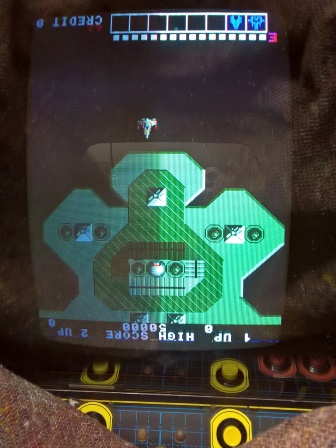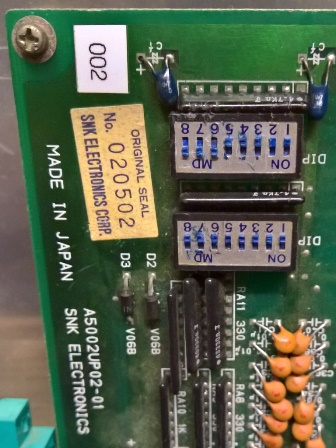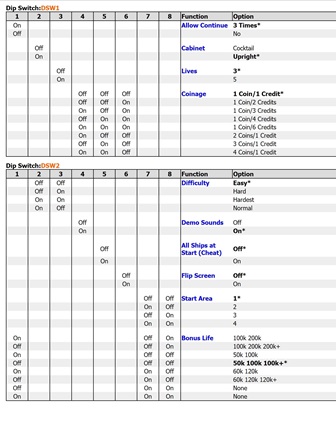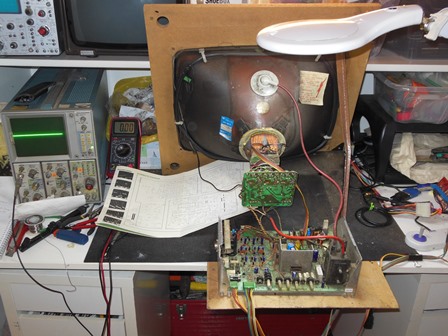


|
The game ran fine for the duration of the show but I noticed that in two player games the 2nd player was upside down - the game PCB was likely set in cocktail mode.



|
The DIP switch settings online (under the alternative game name "ASO: Armored Scrum Object") confirmed that the game PCB was set in cocktail mode and a simple DIP switch change fixed the game.

|
The game was initially running OK during pre-show testing but then a burning smell began to permeate the air and there was no picture. The monitor chassis was burning up resistor R17 (220R/30W), a common failure symptom on this chassis. The chassis was removed for repair.
On the bench the chassis continued to burn up R17. With the yoke connected the regulated supply voltage measured 8.9VDC. With it out measured 193VDC. I suspected a bad HOT or LOPT dragging down the power supply. Back-to-back diode Testing the HOT TR17 (BU208A) read 0.478V forward and 0.555V forward suggesting it at least wasn't open or short. With HOT removed the supply measured 196VDC at the yoke connector. Checking the base of transistor TR10 against waveform 3 in the manual confirmed the HOT drive was OK. I suspected the LOPT was bad :(

|
Having had some challenges in the past with aligning LOPT pins with the PCB I made a paper template to use to bend the new LOPT pins to match the PCB holes. It still took some fussing with it to get the pins to line up enough to go into the PCB. With the new LOPT the chassis was still dead and burning up R17. Removing TR17 again to compare against a replacement BU208A found no differences between them in the back-to-back diode test but I replaced it anyway. With the HOT TR17 replaced the monitor came up working OK and I left myself a note that the removed LOPT may have been working OK. It's relatively unusual for a transistor to test OK in the back-to-back diode test but still be defective (the common failure modes are open & short).

|
Back in the cabinet the chassis ran for several hours without issue.